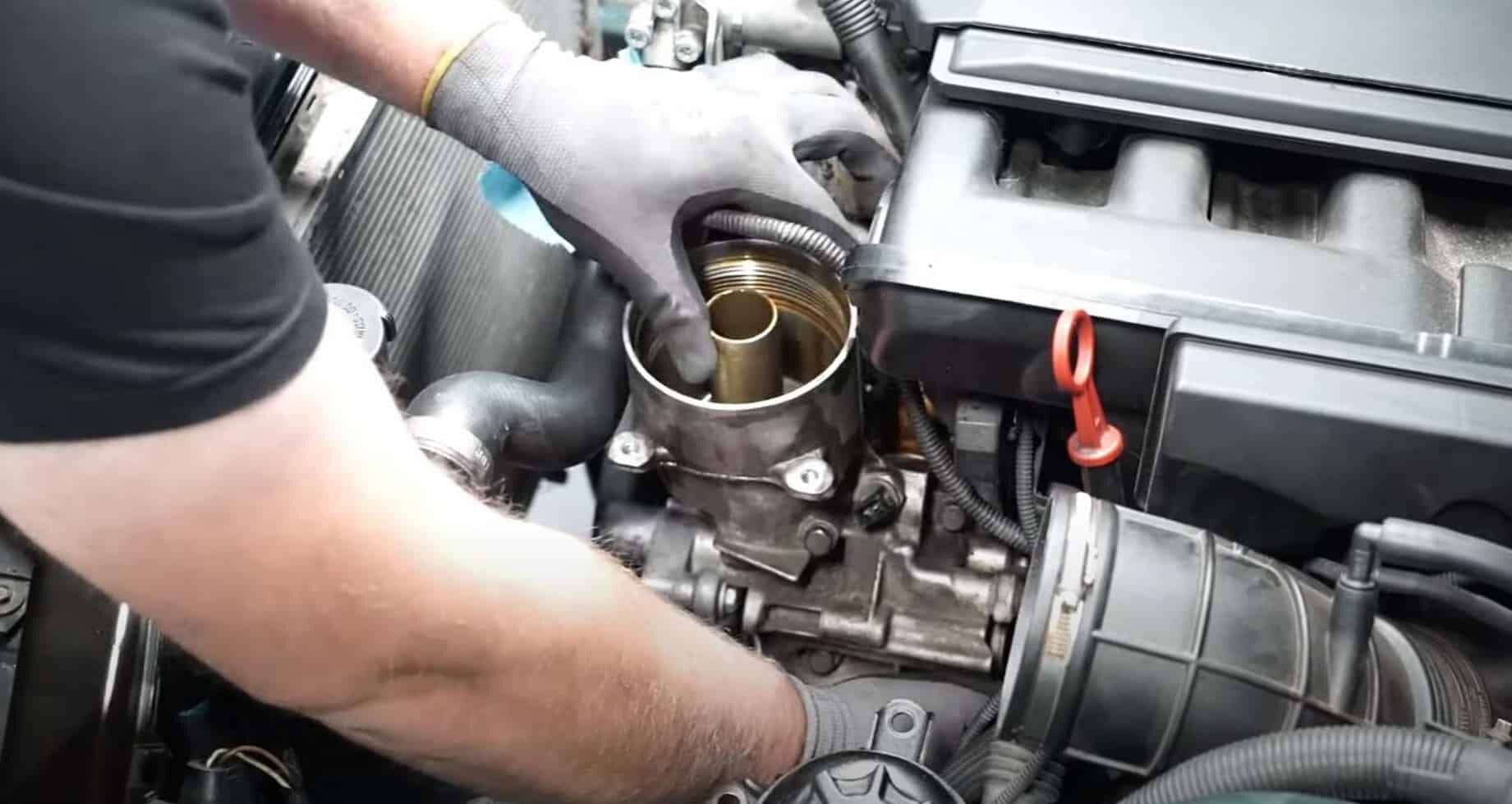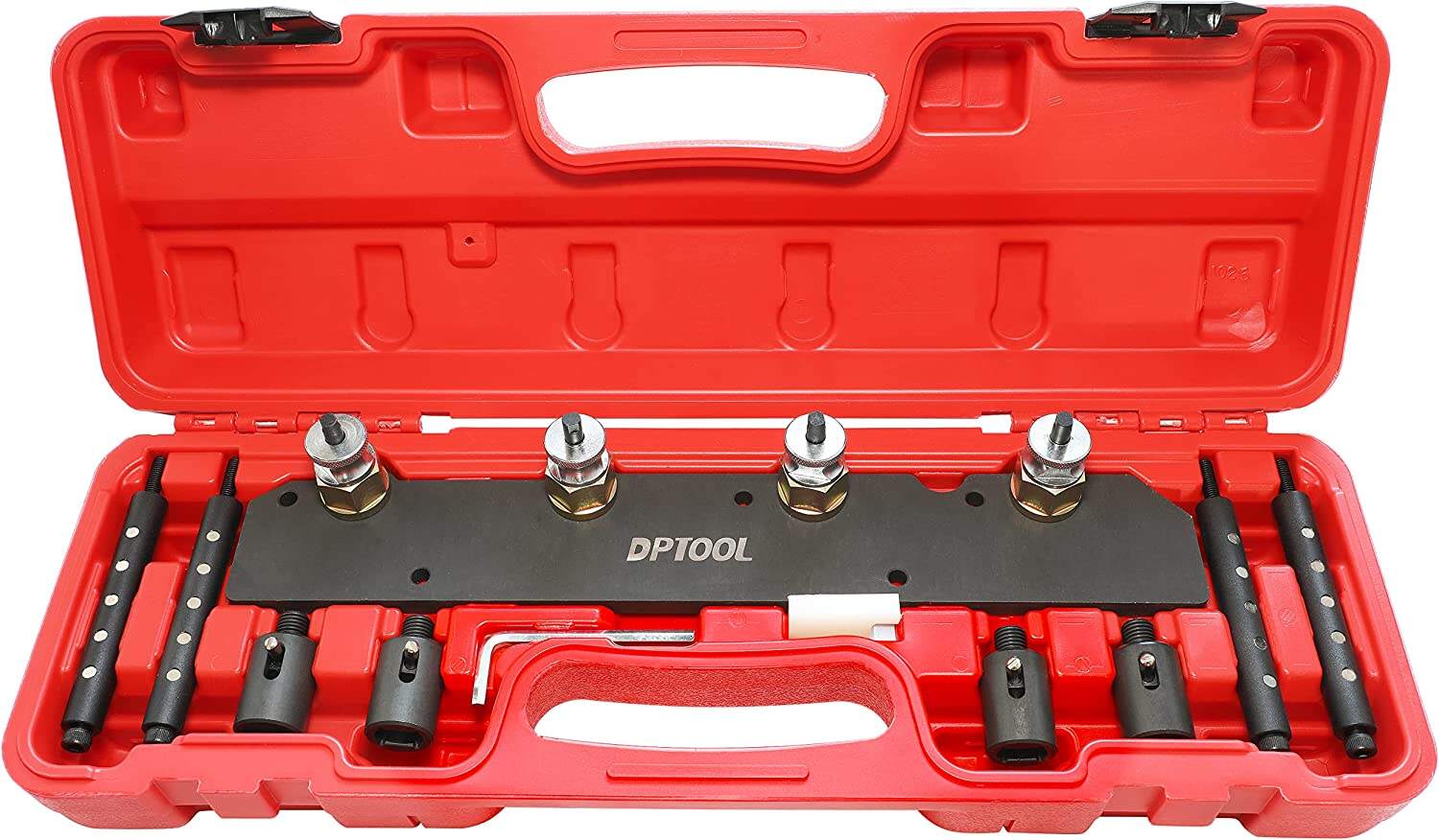The oil filter housing holds the oil filter and connects to the engine block, relying on gaskets and seals to maintain pressure. Over time, heat, vibration, and chemical exposure degrade these seals, causing leaks.
Key Risks of Leaks:
Oil loss leading to engine wear or seizure.
Contaminated engine bays (oil attracts dirt and debris).
Fire hazards from oil dripping onto hot components.

Catching leaks early prevents major engine issues. Watch for these symptoms:
Warning Signs:
Oil puddles under the engine (especially near the filter housing).
Burning oil smell from leaked oil contacting hot surfaces.
Low oil pressure warnings on the dashboard.
Visible cracks or wear on the housing seals.
When to Replace Seals:
During every oil filter change (inspect seals).
If leaks are detected or after engine overheating incidents.
A seal installation kit simplifies the job and ensures professional results.
Tools & Supplies:
Seal installation kit (with drivers and alignment tools).
Torque wrench (for precise bolt tightening).
Plastic scraper or pick set (to remove old seals without scratching surfaces).
Silicone grease (to lubricate new seals).
New OEM seals/gaskets (avoid aftermarket parts for critical seals).

1. Prepare the Engine
Let the engine cool completely.
Drain the oil and remove the oil filter.
2. Remove the Oil Filter Housing
Unbolt the housing from the engine block.
Gently pry it free using a plastic tool to avoid damaging mating surfaces.
3. Extract Old Seals
Use a pick or scraper to carefully remove old seals and gaskets.
Clean the housing and engine block with a solvent and lint-free cloth.
4. Install New Seals
Apply a thin layer of silicone grease to new seals.
Use the installation kit’s drivers to press seals evenly into place.
5. Reassemble and Test
Reattach the housing and torque bolts to manufacturer specs.
Refill with oil, start the engine, and check for leaks.
Reusing old seals: Always replace seals during housing service.
Over-tightening bolts: Warps the housing, creating new leaks.
Skipping lubrication: Dry seals can tear during installation.
Precision alignment: Tools ensure seals sit flush and undamaged.
Time savings: Eliminates guesswork and reduces rework.
Leak prevention: Proper installation extends seal lifespan.
A small leak in the oil filter housing can snowball into engine failure. By using a seal installation kit and following this guide, you’ll ensure a tight seal, maintain oil pressure, and keep your engine running smoothly for miles.
Upgrade your toolkit with our specialized seal installation kits. [Shop Now] or contact our team for expert advice!
Q: Can I reuse the oil filter housing after a leak?
A: Yes, if the housing isn’t cracked—always replace seals and inspect for damage.
Q: How often should I check the oil filter housing?
A: Inspect seals during every oil change and replace them every 2–3 years.
Q: Why does my new seal still leak?
A: Likely due to improper installation or a warped housing. Recheck torque specs and alignment.
By mastering this repair, you’ll stop leaks before they start and protect your engine’s heart. 🛠️🚗💧
